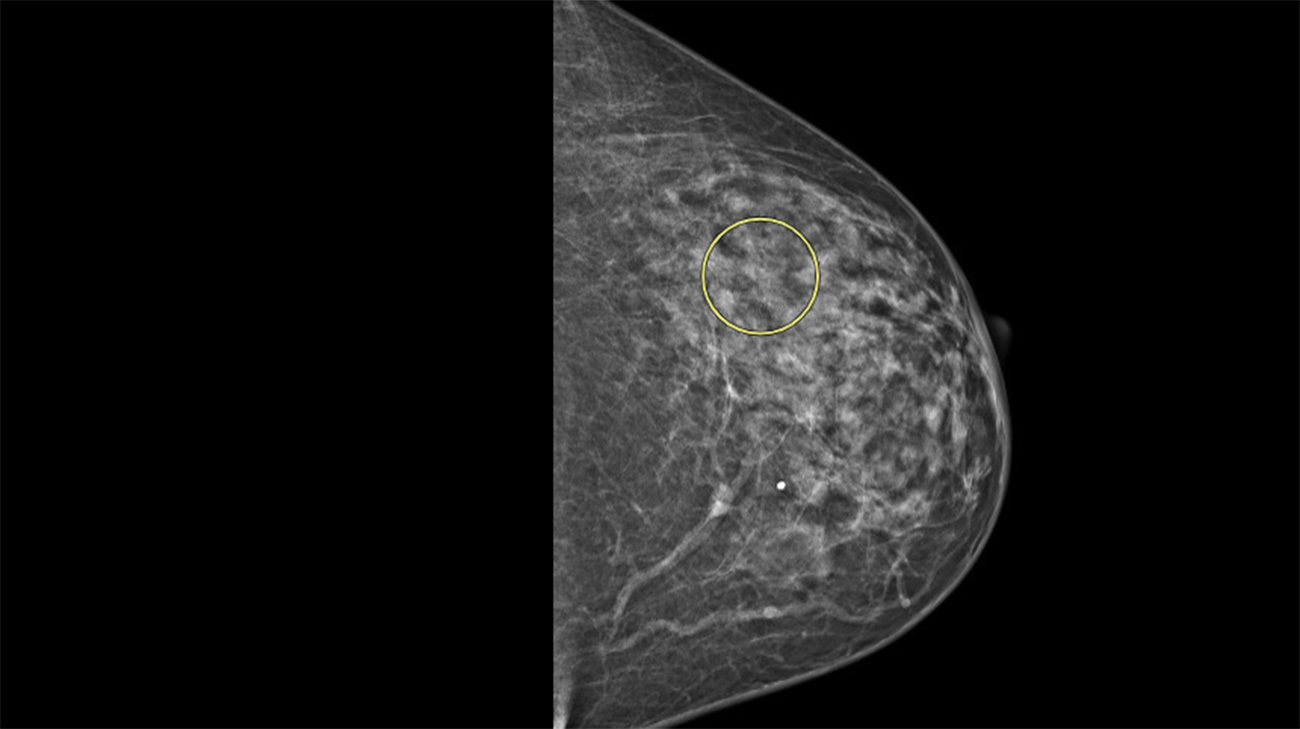
Tammy McDevitt’s breast cancer diagnosis came as a shock—especially after years of normal mammograms.
In September 2024, her annual screening revealed a subtle anomaly—detected by who she calls an “eagle-eyed radiologist” at Cleveland Clinic. That finding led to two follow-up procedures: a diagnostic mammogram and mammography-guided needle aspiration to collect a tissue sample.
Those tests confirmed Tammy had invasive lobular breast cancer, a form of breast cancer that’s notoriously difficult to detect. Unlike ductal breast cancer, which typically forms noticeable lumps, lobular cancer grows in strands or webs of cells, often blending into surrounding tissue. Though it accounts for up to 15% of invasive breast cancers, it’s often referred to as “the sneaky breast cancer” because it can go unnoticed for longer periods.
Tammy, a 64-year-old Mantua, Ohio, resident and grandmother of three, had never missed a yearly mammogram. But after each screening, she received a letter from the state of Ohio explaining her dense breast tissue could make it harder to detect cancer with a standard mammogram. The letter encouraged her to consider additional screening options.
“With dense breast tissue, I kept wondering—if I do have cancer, will they even catch it? I was seriously considering stopping altogether,” says Tammy.

A scan showing lobular breast cancer. (Courtesy: Cleveland Clinic)
Tammy shared her doubts about mammograms with a colleague who happened to be a mammogram technician—and the response was immediate and firm.
“She stopped what she was doing, looked me straight in the eye, and said, ‘Mammograms save lives. I see it every day. You need to keep going,’” Tammy recalls.
That moment stuck with her. Tammy continued getting her annual mammograms—and the follow-up letter—and she’s deeply grateful she did.
Although Tammy was shocked by the diagnosis, her Cleveland Clinic care team quickly put a plan into motion. Within days, they scheduled a series of tests, imaging scans, and oncology consultations—all leading up to surgery to remove the cancer.
“My care coordinator was incredibly clear with me,” Tammy recalls. “She said, ‘Right now, this is the most important thing in your life. You need to make it your priority.’”
Shimoli Barot, MD, Tammy’s breast medical oncologist at Cleveland Clinic, explains that because Tammy’s cancer was detected at Stage 1, the care team moved promptly to develop and implement a treatment plan. “When we can treat it earlier, the outcomes are often positive,” Dr. Barot says.
Dr. Barot adds, “While we pick up most lobular breast cancers through conventional screening methods, it’s important to talk to your doctor about getting an MRI or supplemental screening if there is indication of dense breast tissue, a strong family history of breast cancer, or a relative who got breast cancer at an early age.”

Tammy with her granddaughters on vacation in Florida. (Courtesy: Katrina Lathrop Photography)
As Tammy learned more about her diagnosis, she realized that while no lump had appeared on her affected breast, she had noticed a very subtle change in its shape. At the time, she didn’t think much of it.
“People are often told to look for lumps, but that’s not the only sign,” Tammy says. “For me, it was a change in shape, and I didn’t recognize that as a warning. I want others to know: any change matters. Pay attention, even if it seems small.”
One month after her diagnosis, Tammy underwent a partial mastectomy, which revealed the tumor was slightly larger than imaging had initially suggested. The surgery was successful, followed by a targeted, week-long course of radiation. In the year since completing treatment, she has continued with follow-up scans and appointments with Dr. Barot every three to six months.
Over time, the frequency of these visits will decrease. However, Dr. Barot notes because lobular breast cancer has the potential to recur—even years later and sometimes in other parts of the body—ongoing monitoring remains an important part of long-term care.
In October 2025, Cleveland Clinic launched a Comprehensive Lobular Breast Cancer Program. The program aims to improve early detection, standardize care pathways, and advance research for invasive lobular carcinoma—an understudied and often misdiagnosed form of breast cancer.

With a daughter and three granddaughters, Tammy is hopeful continued research will help save more lives. (Courtesy: Tammy McDevitt)
“We’ve been working to build a program that not only improves care for patients with lobular breast cancer but also raises awareness and drives research. The response from patients and the broader medical community has been incredibly encouraging—and it’s helping us reach more people who need specialized care,” says Megan Kruse, MD, breast medical oncologist at Cleveland Clinic and program director.
While Tammy has fully recovered, she acknowledges a “new normal” in her life—one that’s made her more vigilant about her health and wellness. With a 29-year-old daughter and three granddaughters under the age of 10, she’s hopeful increased awareness and continued research into lobular breast cancer will help save more lives.
“Get your mammogram every year,” she urges. “Make it part of your routine. Even if something is found, it’s better to know and take action—because treatment has come such a long way. When it comes to mammograms, ignorance isn’t bliss. It’s a risk you don’t want to take.”
Related Institutes: Cleveland Clinic Cancer CenterPatient Stories
Perseverance and Focus Help Ovarian Cancer Survivor Beat the Odds HIPEC During Surgery Helps Keep Disease Under Control
Dec 10, 2025
Boy With Advanced Liver Cancer Thriving After Lifesaving Living Organ Donation From Aunt
Dec 8, 2025
Against All Odds A Journey of Recovery After Stroke
Dec 5, 2025
“Dr. Pervez is absolutely incredible, I can’t say enough about him and the speech therapy department. And Cleveland Clinic is phenomenal. They’ve always been wonderful, and I recommend them to everyone I talk to.”


